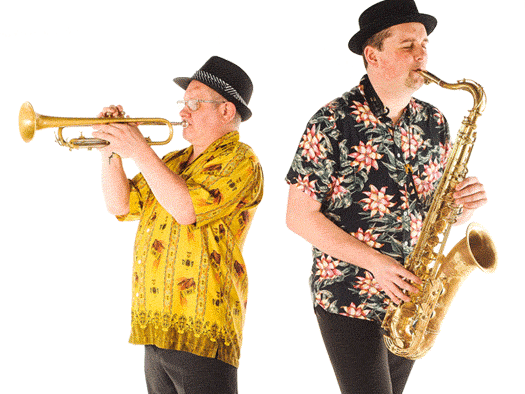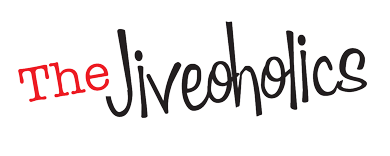



 |
  |
|
|
Louis Jordan Louis Jordan was a hugely successful singer, sax player and song-writer at the height of his popularity in the late 1940s. He had at least four million-selling singles with his band the Tympany Five, and still ranks as the fifth best-selling black artist ever. He was a pioneer of the small band Jump Jive style popular immediately after WW2, and his song Saturday Night Fish Fry is often cited as a serious contender as the first Rock ‘n’ Roll record. His tunes have an infectious rhythm to them, almost always with some comedy twist that makes it impossible not to love playing, hearing and dancing to them. Songs like There Ain’t Nobody Here But Us Chickens, Choo Choo Ch’Boogie, Five Guys Named Moe and Baby, It's Cold Outside are so deeply ingrained in popular culture that you probably know them even if you don’t recognise the name. He also had a talent for the double entendre, often seemingly beyond the boundaries of acceptability, but somehow he never actually got into trouble for it - Show Me How To Milk The Cow, That Chick's Too Young to Fry for example …
|
Cab Calloway
He was a spectacular presence on stage, dressing flamboyantly, dancing outrageously, scat-singing and always getting the audience participation going with his signature “Hi-de-hi-de-hi” choruses – which turned up in a few songs after it worked so well in his first big hit, Minnie The Moocher. Our tune The Jiveoholic Boogie owes more than a little to the Calloway Boogie (well, it’s the same song with one word changed …).
Wynonie Harris was born in 1915. He started as a dancer in the early 1930s and didn’t startsinging until 1935, heavily influenced by the Blues Shouters of the time, like Big Joe Turner. He didn’t develop any kind of recording career until after the war, when he started working with Lucky Millinder’s orchestra. The association lasted only just over a year, and the recordings they made together weren’t released until after they separated. Who Threw The Whiskey In The Well was No. 1 on the R&B chart for eight weeks, and stayed in the chart for a total of five months. He put together his own band, got a new contract and recorded many hits including Good Rocking Tonight, Good Morning Judge, Bloodshot Eyes, and All She Wants To Do Is Rock. His vocal style is definitely less refined than Louis Jordan’s, but he still has that same comedy twinkle in many of his songs.
Big Joe Turner Big Joe Turner is another major influence in the transition from Jive, Swing and Blues music to Rock ‘n’ Roll. Born in Kansas City in 1911, his big break was to appear at Carnegie Hall in 1938 in one of the From Spirituals to Swing concerts. This lead to his first hit, Roll ‘Em Pete, and a residency at the Café Society club in New York City. He always played with boogie woogie players rather than jazzers, and his tunes Shake, Rattle and Roll and Flip, Flop and Fly are in some ways the turning point of Rock ‘n’ Roll. There is no doubt they are boogie tunes, with the shuffling back beat, and Big Joe’s versions, while a bit crude, and rough around the edges, have all the character and feel you could want. But Bill Haley’s cleaned up version of Shake … was commercially more successful.
Jive Revival Jive dancing and the music that goes with it went through something of a revival in the early 1980s. There were several contributing factors to this. Elvis’ comeback in 1968 had revived an interest in Rock ‘n’ Roll and Rockabilly, and this probably seemed like a good alternative to the disco that dominated the charts through the early 1970s.
At almost the same time (1981) Joe Jackson, normally more associated with New Wave pop, put together an album of Louis Jordan and Cab Calloway tunes, Joe Jackson’s Jumpin’ Jive, which helped to bring that material back into the general consciousness. The 1980s saw an explosion of new bands playing the Rhythm & Blues of the 1940s – The Chevalier Brothers (1982), Ray Gelato and the Giants of Jive (1988), The Honkin’ Hep Cats (1988), Cherry Poppin’ Daddies (1988), Big Bad Voodoo Daddy (1989), Brian Setzer Orchestra (1990). Most of these were bigger bands than Louis Jordan’s five or six pieces, and while many of the tunes were the same the approach was a bit different – some of the tunes were just a bit too fast to dance to. Some of them were much too fast to dance to. As the new millennium has seen a resurgence of interest in Jiving – Strictly Come Dancing has inspired people of all ages to learn some new moves at the various classes run all over the UK at least – the speed is coming back down a bit and the feel is getting back to something Louis might have recognised in 1947. There’s nothing quite like playing music that gets the audience up and dancing, and this music definitely gets the job done!
|